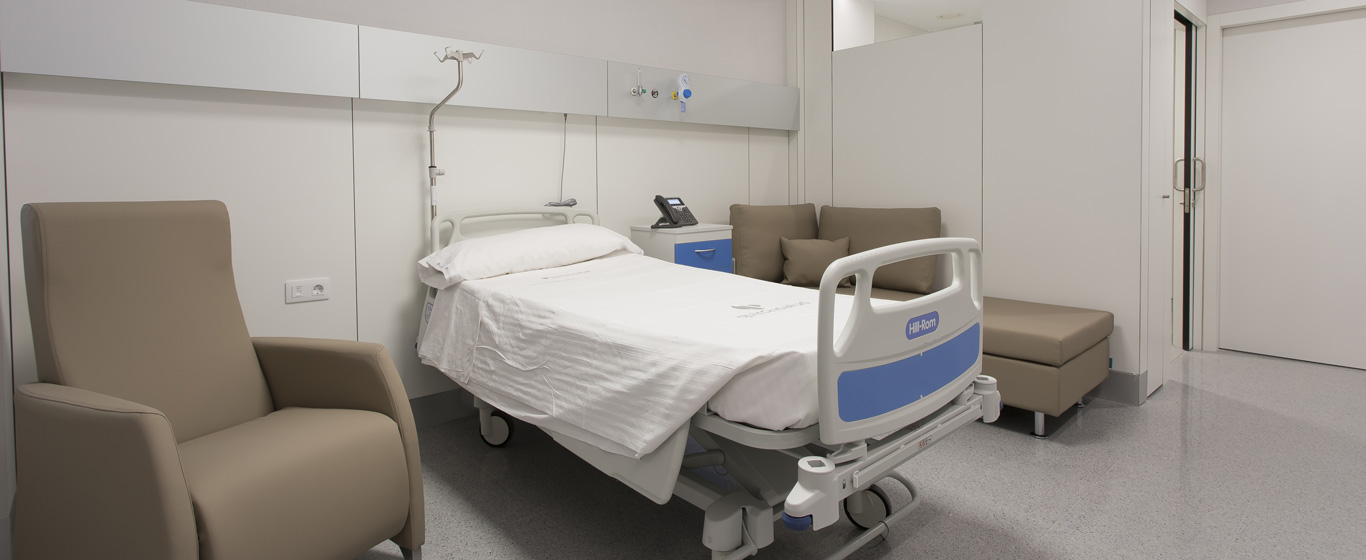Cancer
What is cancer? What types of tumors are most common? Everything about the causes, symptoms, and treatments used in oncology.
Symptoms and Causes
The word cancer refers to diseases caused by abnormal and uncontrolled cell growth in an organ or tissue of the body. When these cells continue growing and multiplying, they can destroy and replace normal tissue, causing the body to stop functioning properly. Although cancer is currently one of the leading causes of death worldwide, medical and scientific advances have allowed more and more patients to overcome the disease.
The characteristics of cancer and its response to treatments vary depending on the cells and the part of the body where it originates. In most cases, each type of cancer is named after the organ where it forms (e.g., breast cancer, lung cancer, or prostate cancer) and continues to be called the same even if it spreads to other areas as metastasis.
Cancer is divided into two major groups, which are further classified into different categories depending on the affected cells:
- Hematologic or blood cancers: occur in blood cells.
- Leukemia: originates in the red bone marrow, the tissue responsible for producing blood cells. As a result, an excess of white blood cells is produced, preventing the development of other components and potentially causing anemia, bleeding, thrombosis, or infections.
- Lymphomas: develop from lymphatic tissue, where lymphocytes grow abnormally and accumulate in lymph vessels and nodes, affecting the immune system. They can lead to Hodgkin lymphoma (B cells) or non-Hodgkin lymphoma (B or T cells).
- Multiple myeloma: results from the abnormal development of plasma cells, which accumulate in the bone marrow.
- Solid tumor cancers: occur in cells that form a tissue or organ.
- Carcinoma: the most common type. It originates in epithelial cells, which line the inside and outside of organs. They include adenocarcinomas, which form in glandular tissue (prostate or breast cancer), squamous cell carcinomas (lung or stomach cancer), basal cell carcinomas, which affect the epidermis and cause the most common type of skin cancer, and transitional cell carcinomas, which impact the urothelium (bladder or kidney cancer).
- Melanoma: affects melanocytes, the cells that produce melanin.
- Sarcoma: forms in bones and soft tissues (muscles, tendons, ligaments, or blood and lymphatic vessels). The most well-known is osteosarcoma, which is the most common bone cancer.
- Neuroendocrine tumors: may be benign or malignant and cause excessive hormone production. Carcinoid tumors and astrocytomas belong to this group.
- Brain or spinal cord tumors: affect nervous system cells.
- Germ cell tumors: originate in the cells that form eggs or sperm (ovarian or testicular cancer).
Symptoms
Symptoms vary depending on the type of cancer, the organs affected, and its growth rate. A medical evaluation is necessary to diagnose or rule out cancer. Some of the most common signs caused by cancerous tumors include:
- Fever.
- Easy bruising.
- Fatigue (shortness of breath).
- Persistent cough.
- Lumps under the skin.
- Indigestion.
- Difficulty swallowing.
- Weight loss.
- Fatigue.
Causes
Cancer occurs when a cell's DNA mutates and develops abnormally. These changes may be due to genetic predisposition, exposure to carcinogens, or lifestyle factors.
Risk Factors
Cancer can affect anyone, but some factors increase the risk of developing it, such as:
- Advanced age: the percentage of people with cancer increases after age 60.
- Smoking.
- Alcohol consumption.
- Obesity.
- Exposure to radiation, including sunlight.
- Weakened immune system.
- Chronic inflammation.
- Genetic predisposition.
- Infections: Human papillomavirus, hepatitis B...
Complications
Each type of cancer has its own complications. In general, metastasis, which is the spread of cancer cells to other organs, is one of the main complications. Additionally, many cancer survivors have an increased risk of recurrence.
Prevention
Early detection, while it does not prevent cancer, is essential to reducing mortality rates.
Therefore, it is important to attend recommended medical check-ups based on age and gender. Additionally, adopting healthy habits can help prevent certain types of cancer. Some recommendations include:
- Avoiding tobacco and alcohol consumption.
- Following a healthy diet.
- Maintaining a healthy weight.
- Exercising regularly.
- Practicing safe sex.
- Protecting oneself from ultraviolet rays.
- Undergoing regular medical check-ups.
What Doctor Treats Cancer?
Cancer diagnosis and treatment require a multidisciplinary team, including specialists in medical oncology, radiation oncology, surgery, preventive and complementary medicine, smoking cessation, palliative care, psychology, and nutrition.
Diagnosis
Cancer diagnostic tests vary depending on the patient’s symptoms and, ultimately, on the type of tumor and affected organs. However, some tests are commonly used for all types of cancer, including:
- "Medical interview": doctor’s questions about symptoms and health history.
- Physical examination: observation and palpation help specialists detect lumps or skin changes.
- Blood tests: detect tumor markers and other abnormalities.
- Imaging tests: X-rays, ultrasounds, MRIs, CT scans, and nuclear medicine tests (Scintigraphy, PET-CT) provide internal organ images to detect inflammation, enlargement, or tumors.
- Biopsies: tissue samples are extracted by puncture or surgery and analyzed in the laboratory under a microscope to differentiate normal from cancerous cells. Molecular biology studies are increasingly used to identify genetic alterations, aiding in personalized treatment.
Treatment
Cancer treatment approaches vary, and the most effective therapies are personalized and combine different procedures. Treatments can be categorized based on their objective:
- Surgery: performed to completely remove the tumor or as much cancerous tissue as possible.
- Adjuvant therapy: aims to eliminate any remaining malignant cells after surgery. Common options include:
- Radiotherapy: uses high doses of ionizing radiation to destroy cancer cells. It is painless and can be used as a standalone treatment or in combination with surgery or other therapies.
- Immunotherapy: strengthens the immune system to help fight cancer. It can involve stimulating natural defenses or administering biologically engineered substances. It is often used for bladder cancer, melanoma, lymphoma, or leukemia.
- Chemotherapy: employs drugs to destroy cancer cells by inhibiting their growth. It is suitable for brain, colorectal, or lung tumors.
- Hormone therapy: removes or adds hormones to slow tumor growth. It is commonly used for breast or prostate cancer.
- Palliative care: helps manage the negative effects of both cancer and its treatments, improving quality of life by reducing pain and psychological distress.













































































